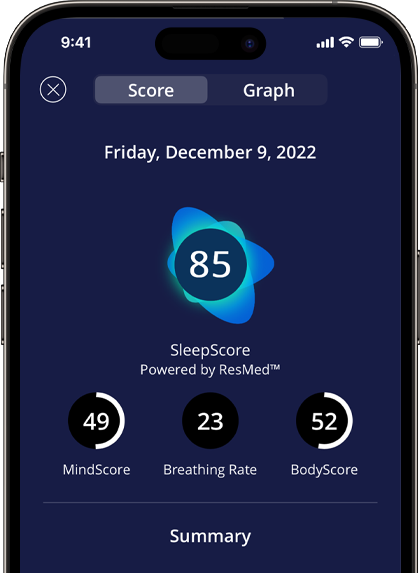12 Sleeping Positions Couples Can Try

Did you know that only seven percent of couples below the age of 55 sleep in different beds? It’s no wonder why sleeping with your partner may help you build intimacy and closeness together, along with creating feelings of security and relaxation as you wind down.
While research shows that up to half of couples complain of excessive awakenings due to a bed partner, our prevalence of sharing a bed suggests that the pros outweigh the cons.
Looking to try some new sleeping positions to help you and your partner enjoy a good night’s rest without sacrificing the feeling of warmth and security that comes with sharing a bed together? You’re in the right place.
1. Spooning
Spooning is one of the most popular sleeping positions among couples.
Here’s what it looks like: both partners sleep closely together on their sides, in a curved position. One partner faces the direction of the other partner.
The first partner is the little spoon, while the other facing them is the big spoon.
This position is a classic because it may make the little spoon feel comfortable, secure, and cared for.
Research suggests that 31 percent of people prefer sleeping facing the same direction as their partner.
Sleep research is yet to explore the benefits of different couple sleeping positions. However, the closer couples sleep together, the more the potential of them building feelings of satisfaction and security about their relationship.
2. Loose Spoon
Unlike spooning, when partners sleep in the loose spoon, they maintain some distance while one still faces the same direction as the other.
The loose spoon position supports both partners’ comfort while asleep while still maintaining intimacy. Both partners can have more breathing space to themselves without feeling alone in bed.
3. Chasing Spoon
In the chasing spoon, one partner sleeps on their side a few inches away from the other partner, while the other partner faces their direction without touching them. But you can tell that the other partner wants to maintain contact as they take on the big spoon position.
The big spoon may seem like they’re chasing the partner close to the edge of the bed; hence the name, chasing spoon.
4. Back to Back, Touching
In back to back, touching sleeping position, both partners sleep facing opposite directions, but their lower backs still touch each other.
This sleep position is also called the cherish position or back kissing. It may indicate that both partners prioritize their independence but still value being close to each other.
5. Back to Back, No Touching
Back to back, no touching is also known as the liberty position. It is similar to the back to back, touching, except that both partners don’t maintain contact with each other.
When partners sleep in this position, it may mean that they have a strong sense of independence and are self-sufficient enough not to need each other’s touch while sleeping.
It may also mean that both partners need some space between each other. And this may be without malice.
However, a 2014 study suggests that 94% of couples who maintained touch while asleep were happy with their relationship. In contrast, only 68% of couples that didn’t touch were happy with their relationship.
6. Face to Face, Touching
Here couples face each other on the bed while maintaining close distance.
According to a 2014 study, only 4 percent of the participants assume this position when sleeping with their partners.
7. Face to Face, No Touching
Here, couples sleep facing each other but do not touch. There’s a space between each other, but they may still be close enough to breathe into each other’s faces.
This couple’s sleeping position is also known as pillow talk.
8. The Cradle
This sleeping position is also called The Nuzzle.
Here, one partner sleeps on their back while the other rests on their side with head and hands on the partner’s chest and belly and leg on the other’s legs.
9. Stomach Sleepers
Here, both partners sleep on their stomachs and are apart.
While most people may take on positions that make them feel the most comfortable when sharing a bed with a partner, couples who regularly take on this position may be closed off to each other.
10. Intertwined
When couples are intertwined, they don’t give themselves any breathing space. They wrap their arms and legs around each other, whether or not this position may make them feel comfortable for sleep.
11. Legs Touching
Couples who sleep in the legs touching position sleep with their legs touching each other. They may assume any sleeping position but still maintain contact with their legs.
12. Head on the Other’s Shoulders
This sleeping position is also called shingles. Here, both partners sleep on their backs. One rests their head on the other’s shoulders while the other put their arm around them.
Tips for Getting Better Sleep With a Partner
If you enjoy sharing a bed with your partner and value having consistent refreshing sleep, here are some tips that may help you maximize the comfort of sleeping with your partner while getting the recovery sleep you deserve.
- Communicate your sleeping preferences with your partner
If you prefer sleeping without maintaining close contact with your partner or love being tangled up with them, discuss it.
If they feel otherwise, you can make an arrangement that works for both of you.
- Invest in a mattress with enough space
Regardless of what sleeping position you and your partner enjoy, sleeping on a small mattress may make getting a good night’s rest difficult.
You may end up struggling for space or getting uninterrupted sleep because the slightest movement from your partner wakes you up.
Consider getting a king-size bed or a size closer to that, so you no longer have to sacrifice quality sleep for intimacy.
- Look into sleep aid devices
Sleep aid devices may help you and your partner fall and stay asleep. These might include eye masks, white noise machines, earplugs, and anti-snoring devices.
Consider visiting a doctor if you or your partner experience sleep disorders or other conditions that may disturb sleep health.
- Avoid using electronic devices during bedtime
Electronic devices such as your phone, tablet, laptop, or t.v may disturb partners from having intimate time with each other or giving each other the attention they crave. Try to limit their usage to at least 2 hours before bedtime.
The blue light from electronic devices may also keep you alert and awake. You may find it hard to fall asleep after exposing yourself to blue light, so it’s best to limit use as bedtime approaches.
Benefits and Drawbacks of Sleeping With a Partner
Sleeping with a partner comes with its pros and cons.
Here are some of the benefits you may enjoy when you have a partner by your side in bed:
1. Improved Body Image
Sleeping with your partner may help you improve your body image and self-confidence.
A study suggests that a person may build up a positive body image and be more happy or satisfied with how they look when interacting with someone who has seen them naked.
2. Better Sleep
Having a loved one’s company during bedtime may help you feel safe, calm, and happy. This experience may help you sleep easily.
Studies also suggest that people who sleep with a partner experience better sleep quality, duration, efficiency, and structure.
3. Stress Relief
Sleeping with a loved one may also help you ease your stress levels. When people are in close contact with their loved ones, the body releases oxytocin, also known as the social hormone.
This hormone is well known for its anti-stress effects and may help manage mood disorders, anxiety symptoms, and sleep problems.
4. Build Intimacy
The more time you spend with your partner, the more you can build intimacy with them.
What’s more, cuddling with them at nighttime may promote physical and emotional connection with them, intensify your feelings of trust, care, and warmth with each other, and help you feel more grounded in your relationship with them.
Some of the disadvantages of sharing a bed with a partner include:
1. Difficulty Sleeping
If a person has a sleep problem, there’s the potential that it may affect the other’s sleep health.
For example, a partner with obstructive sleep apnea, the “disease of listeners,” will disrupt the other partner’s sleep with snoring, especially if the other partner isn’t wearing earplugs.
2. Relationship Stress May Affect Sleep
If your relationship is going through a difficult phase, you may find it hard to sleep when you’re sharing the bed with your partner.
Studies suggest that relationship problems may contribute to sleep problems, such as difficulty falling asleep due to the intrusive or negative thoughts a partner may be having over their situation.
All in all, there’s no one-size-fits-all approach when it comes to sleeping as a couple. Whether you enjoy snuggling all night, or prefer to ‘starfish’ on your own side of the bed, as long as you and your partner communicate your preferences and give each other the space (or closeness) you each desire, there’s no reason you can’t both achieve a great night’s rest for a happy morning together.


